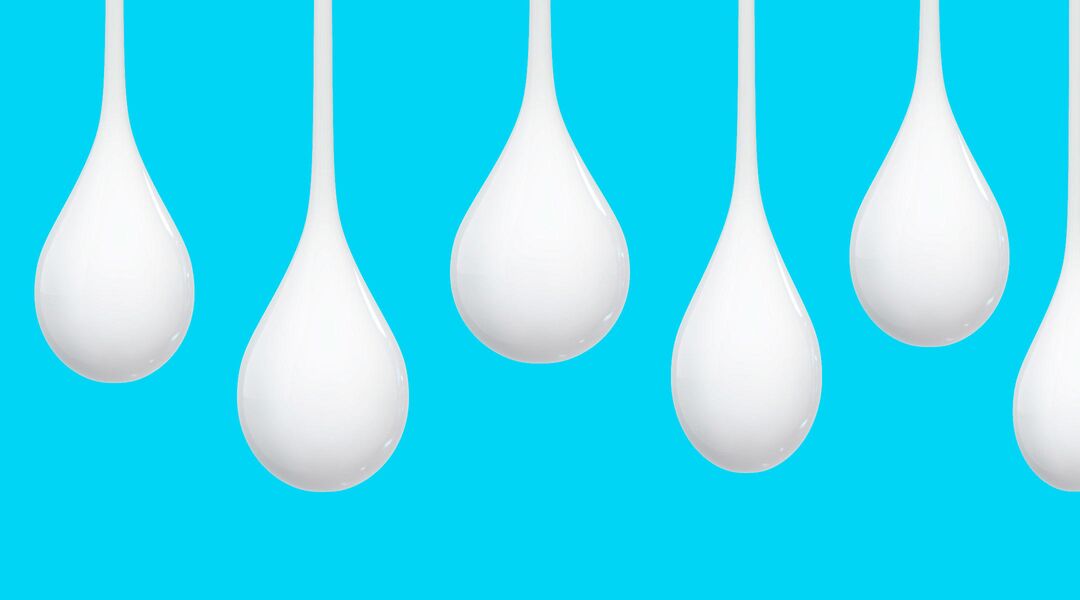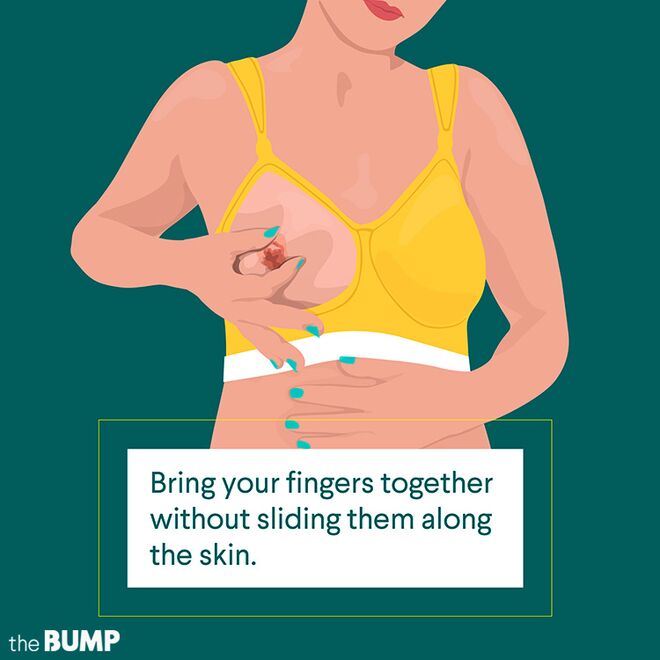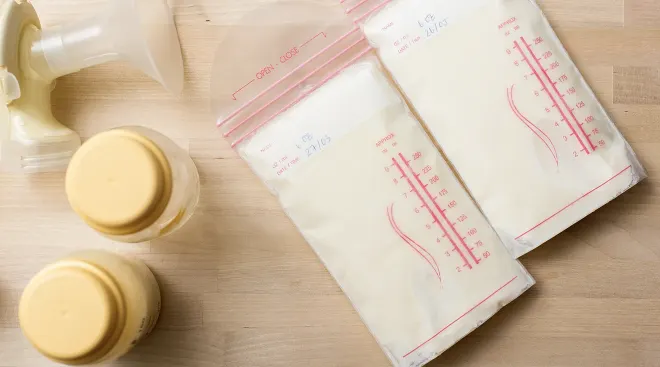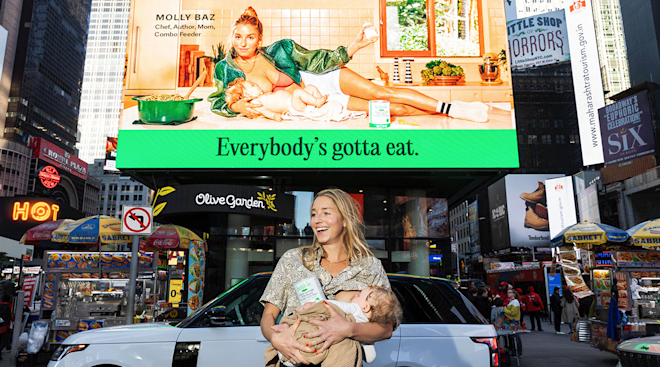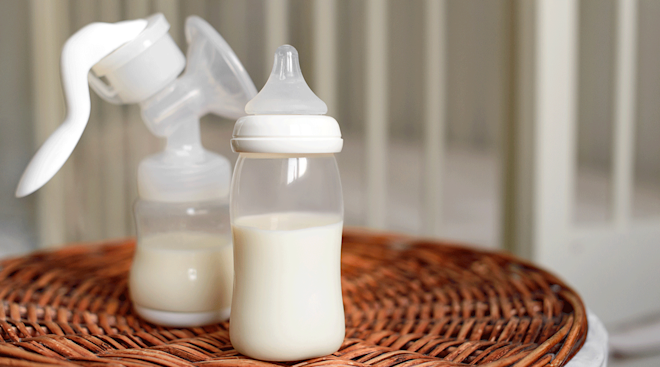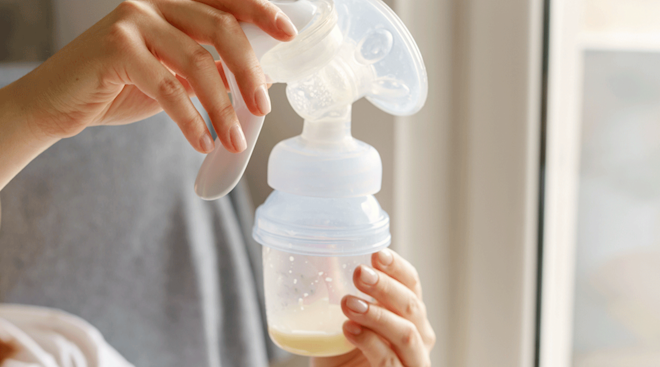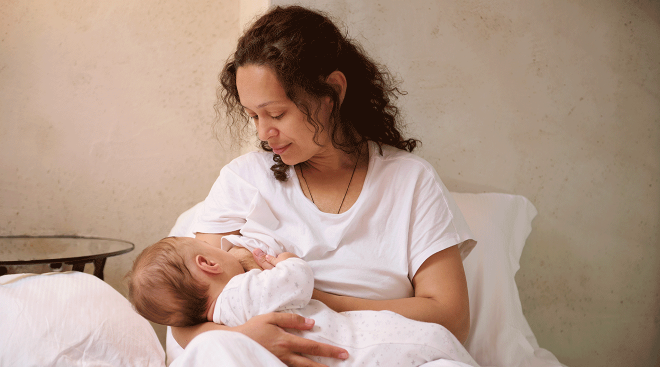Hand Expression 101: How to Hand Express Breast Milk
A few weeks after having a baby, the stars somehow aligned for Jenn O., a mom of a now4-year-old son. She and her husband were actually able to sneak out for a date and enjoy a quick slice of grown-up time. But less than halfway through the meal—and just two hours past the time she’d typically be breastfeeding baby—her husband noticed she was leaking. Despite having fed baby and pumped just before leaving, her breasts were suddenly swollen and hard, threatening to soak one of the few decent, clean shirts she had. Luckily, she had a solution. She simply excused herself, slipped into the restroom, leaned over the toilet and started hand expressing her breast milk. (“I just milked myself as if I were a cow,” she says with a laugh.) Disaster averted. She returned to the table and finished her meal like nothing happened.
Hand expression, or the use of your hands to extract milk from your breasts, isn’t usually practiced among American breastfeeding mothers, given the accessibility of breast pumps. But it’s a technique that can prove helpful throughout the time a woman is breastfeeding.
Breastfeeding baby may be the best way to establish and maintain your milk, but hand expression, especially in the first few days after giving birth, can also be a very valuable tool (and much less complicated than a pump) in helping increase your supply during the early days as well as later on.
Doctors at Stanford University say women who are hand expressing milk more than five times a day in the first three days after birth can have as much as 80 percent more milk as their supply comes in.
Hand expression can be extremely helpful if mom and baby have to be separated while in the hospital, like if a baby has to spend some time in the NICU. “It gives a mom another option,” says Gina Ciagne, a certified lactation consultant at Lansinoh, a maker of breastfeeding products. “It’s one of the most natural things to do besides having a baby on the breast. Having your hands on your body releases the hormones that trigger the release of milk.”
In addition, hand expression can be key in capturing colostrum, the super-concentrated, protein-rich milk moms produce in the first couple of days post-birth. Given that colostrum comes in such tiny amounts—literally drops, Ciagne says—“you don’t want any of it sticking to the side of a bottle [with a pump].” Using a spoon or a little container that you can gently slide along your skin to capture every drop works best.
Your breasts will appreciate hand expression later on too, if you happen to be dealing with engorgement or a plugged duct. “You can feel a little more,” says Mary Ann Jones, program manager for lactation at Sharp Mary Birch Hospital for Women & Newborns in San Diego, and a former labor and delivery nurse. “With your fingers, you go behind the plug, toward the chest wall, and massage downward to the nipple. When you feel it, keep massaging—it’s much easier to get that out than just with putting on a pump, and it can save you from getting mastitis.”
Plus, some moms might feel a little stressed sometimes and don’t let down well with a pump, says Deedra Franke, a registered nurse and lactation consultant at Mercy Medical Center in Baltimore. “But she’ll find that hand expression just works better,” she says.
The most effective way for hand expressing breast milk varies from mom to mom. “It may not even be identical on the same woman,” Jones says. “She’ll learn for herself the map of her own breasts.” Like anything, it takes lots of practice; the best tutorials are in-person lessons from your OB, delivery nurse or lactation consultant.
In general, before any milk is actually collected, adept hand expressers “wake up” their breasts’ milk production by gently massaging or shaking them, which will eventually start the drips of milk. (Of course, if you’re already leaking, as in Jenn’s scenario, you can go straight to the next section on how to hand express breast milk.) For extra help, Melissa LaHann, a nursing mom in Chicago and creator of the LatchPal Breastfeeding Clip, which holds up your shirt, finds that a warm compress can come in handy. “Heat can be really nice,” she says. “It helps you relax, it’s soothing and it accelerates the process a little bit.”
All this pre-expression preparation stimulates the alveoli—the milk-making cells—into expelling milk into the duct system that sits just behind your areolae. A small portion of the milk may then flow down and collect into the terminal ducts, which are the areas you’re looking to manipulate during hand expression.
There are many different hand expressing methods on the Web. No matter what method you try, it shouldn’t cause any pain, even if your breasts are engorged or your nipples ache. So why not give it a go? Here’s a super-simple five-step method that Jones recommends:
Step 1: Make a “C” with your thumb and index finger, then place them two to three inches apart, centering your nipple between those fingers. This is your resting position.
Step 2: Without spreading your fingers apart, push into the breast and back toward your chest wall.
Step 3: Bring your fingers together without sliding them along the skin. This should release milk.
Step 4: Return to resting position and repeat. Continue this for several minutes to allow milk to flow.
Step 5: Rotate your fingers around the breast, repeating steps 1 through 4, so you drain all the surrounding milk ducts.
Don’t be discouraged if you don’t see milk right away; it may take a few tries. The process for hand expressing milk should take about 20 to 30 minutes if hand expression is replacing a normal feeding. For moms accustomed to pumping, though, you can simply use it as a quick fix, as Jenn did. Besides being very natural and environmentally friendly, Ciagne says, “it’s portable—you always have your hands with you.”
Published September 2017
Please note: The Bump and the materials and information it contains are not intended to, and do not constitute, medical or other health advice or diagnosis and should not be used as such. You should always consult with a qualified physician or health professional about your specific circumstances.
Navigate forward to interact with the calendar and select a date. Press the question mark key to get the keyboard shortcuts for changing dates.
































